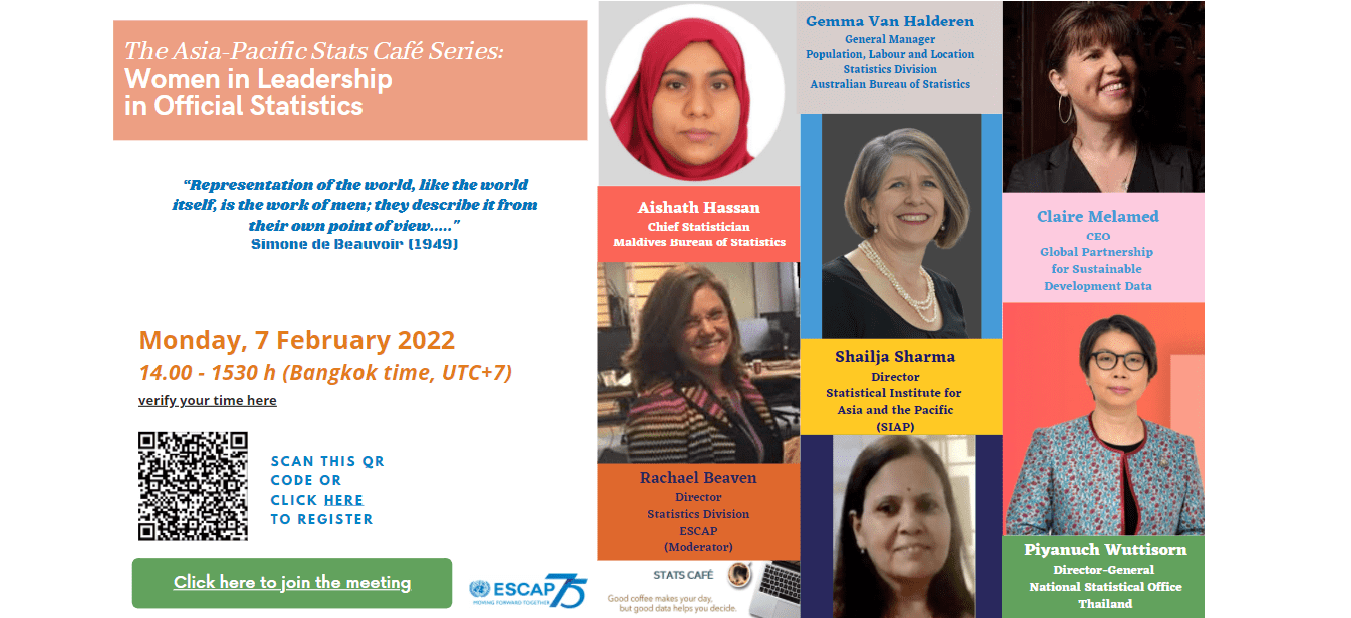
Women in leadership positions are under-represented and the field of official statistics is no exception. While the situation may have approved since 1993 where the single female statistician at the UN Statistical Commission was referred to as ‘the lady statistician', fewer than one in five of National Statistical Offices (NSOs) in Asia and the Pacific, are currently headed by women. As highlighted byParis21, empowering women to take on leadership roles is not simply a matter of equality or representation. Women leaders, with their diverse experience, ideas and perspectives have led substantive reforms and improved the performance of NSOs. Given that official statistics are meant to represent society at large, underrepresented voices are critical in leadership roles.
While there is extensive research about women in leadership in general, little has targeted the statistics profession and even less the field of official statistics. Listening to the voices and experiences of current women leaders is valuable for all genders, both for those considering leadership as part of their career and are interested in pathways and strategies to overcome barriers, and for those who are already or will become leaders to deepen their perspective and understanding of these issues to become gender transformative leaders who catalyze change in their organizations and beyond.
This Stats Café brought together a diverse group of successful women leaders in official statistics, including from the national statistical systems, international and regional organizations, and civil society to discuss how they advanced professionally, cultivated their leadership skills and the path they took to become a leader. The conversation further explored how they confronted established gendered social norms and stereotypes, especially in a male-dominated workplace, and how any bias and discrimination was challenged and addressed. We also explored how these leaders become a role model and mentor for both men and women to emulate. Finally, there was a discussion of opportunities to develop strong leadership voices, encourage more women into leadership position and how barriers to female leadership in official statistics can be overcome.

